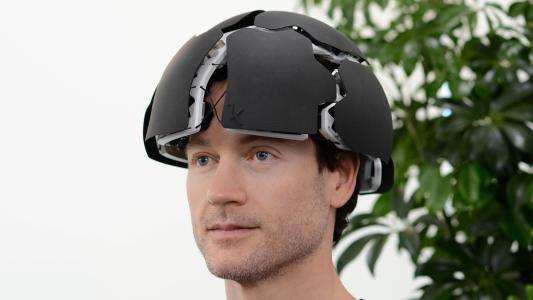A Cambridge University-led team of scientists has developed an ultra-tiny implant that can deliver pain-relieving spinal cord stimulation — and patients won’t even need invasive surgery to use it.
Spinal cord stimulation: As many as 1 in 12 Americans lives with back pain that can’t be treated effectively with normal medication, according to the CDC.
Implantable devices that deliver electrical impulses right to the spinal cord — spinal cord stimulators — can sometimes provide long-term pain relief to people with intractable back pain.
The challenge: While potentially millions of people could benefit from spinal cord stimulation, doctors only implant about 50,000 of the devices every year. One explanation for their rarity is the fact that all of the available implants have shortcomings.
The most effective stimulator covers a large area of the spinal cord, but because the device itself is large, it must be implanted through an invasive surgery while patients are under general anesthesia.
There’s also a smaller stimulator that can be implanted via a needle with just local anesthesia, but it covers a smaller area of the spinal cord and is less effective.
“Our goal was to make something that’s the best of both worlds — a device that’s clinically effective but that doesn’t require complex and risky surgery,” Christopher Proctor, co-senior author of the study, said in a press release.
Stimulation with inflation: The spinal cord stimulator they developed is only about the width of a human hair. It’s also flexible, which means it can be rolled into a cylinder and inserted into the spinal column via a needle — no invasive procedure required.
Once in place, air or water is pumped into tiny channels in the device, which causes it to unfurl like an air mattress to cover a larger area of the spinal cord.
“Thin-film electronics aren’t new, but incorporating fluid chambers is what makes our device unique,” Proctor explained.
An effective device that doesn’t require invasive surgery could bring relief to so many people.
Damiano Barone
Looking ahead: So far, the spinal cord stimulation device has only been tested in human cadavers and models of spinal columns, so we don’t know for sure yet how its efficacy compares to existing devices.
However, the stimulator could be ready for clinical trials within two or three years — and it may have more uses than just pain management.
“The way we make the device means that we can also incorporate additional components — we could add more electrodes or make it bigger in order to cover larger areas of the spine with increased accuracy,” Damiano Barone, the study’s other co-senior author, said.
“This adaptability could make our SCS device a potential treatment for paralysis following spinal cord injury or stroke or movement disorders such as Parkinson’s disease,” he continued. “An effective device that doesn’t require invasive surgery could bring relief to so many people.”
We’d love to hear from you! If you have a comment about this article or if you have a tip for a future Freethink story, please email us at tips@freethink.com.
